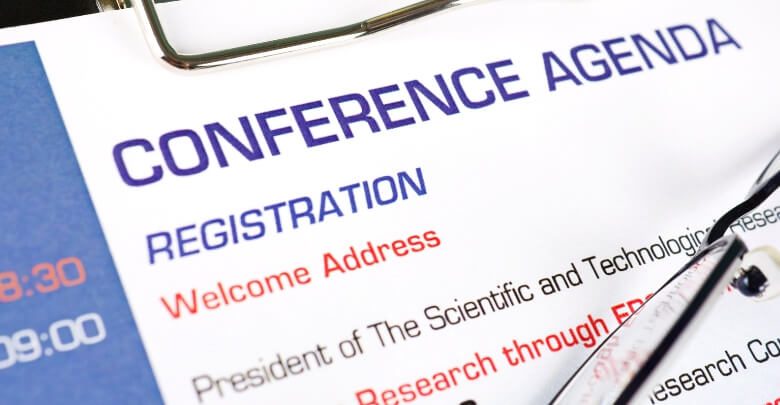Presenting research findings at conferences is essential for scholars sharing their work, gaining feedback, and fostering collaborations within their academic communities. However, a common query often arises: Can you present a published paper at a conference?
It is possible to present a published paper at a conference. However, the decision to present a published paper at a conference depends on various factors, such as the conference’s guidelines, policies, and the purpose of the presentation.
In this blog, we will explore the considerations, guidelines, and best practices surrounding the presentation of published papers at conferences. Join us as we unravel the possibilities, advantages, and impact of showcasing your published work in the vibrant realm of academic conferences.
Understanding Conference Papers
A conference paper is a scholarly publication that presents research findings or academic work at an arts and academic conference. It serves as a platform for researchers to share their findings, ideas, and insights with a specialized audience in their field of study.

Difference between Journal and Conference Papers
So, If you are confused about the differences between journal and conference papers, well. Journal papers are comprehensive and undergo rigorous peer review for publication in scholarly journals, contributing to knowledge in a specific field. Conference papers, on the other hand, are concise and meant for presentation at academic conferences.
They provide a platform to showcase work, receive feedback, and engage in scholarly discussions. While conference papers lack extensive peer review and permanence, they offer timely dissemination of research and promote collaboration among researchers.
Publication of Conference Papers
While conference papers do not have the same status as journal papers in traditional publications, they are significant in the academic community. Conference papers are considered a form of publication, albeit with a more immediate impact.
They allow researchers to disseminate their findings, receive recognition, and establish their presence in the academic landscape. Conference paper publications contribute to a researcher’s profile, serving as a valuable stepping stone toward subsequent journal publications.
Can You Present A Published Paper At A Conference?
Presenting a published paper at a conference is a question that often arises among researchers. The answer to this question is not a straightforward yes or no, as it depends on various factors and considerations. Generally, it is possible to present a published paper at a conference, but there are a few important points to remember.
Firstly, it’s crucial to understand the difference between a published paper and a conference paper. Published papers typically undergo a rigorous peer review and are accepted for publication in reputable journals. Conference papers, on the other hand, are shorter and designed for presentation at conferences, allowing researchers to share their work, receive feedback, and engage in scholarly discussions.

While presenting a published paper at a conference is possible, ensuring it aligns with its guidelines and policies is essential. Some conferences accept previously published papers, while others restrict or prioritize new and unpublished research. Reviewing the conference’s submission guidelines and inquiring with the organizers if any doubts or questions arise is essential.
Another aspect to consider is the purpose of presenting a published paper at a conference. Presenting a published paper can provide an opportunity to disseminate research findings to a wider audience, engage in discussions with peers, and receive valuable feedback for future research.
However, presenting a published paper at a conference may not carry the same weight or impact as publishing it in a journal. Journals typically have a more extensive peer review process and higher standards for publication.
Journal publications are often considered more permanent and influential within the academic community. Nevertheless, presenting a published paper at a conference still benefits and contributes to a researcher’s professional development.
Presenting a published paper at a conference offers an intriguing prospect for researchers seeking to expand the reach of their work. However, maneuvering through the intricacies and factors involved in making this decision is essential.
Conference Paper Structure And Submission
You need to follow a specific structure of conference papers that contain key components to effectively communicate research findings. Understanding this structure and incorporating essential elements is crucial for presenting a well-structured and coherent conference paper.
Structure and Components of a Conference Paper
A typical conference paper includes an introduction, literature review, methodology, results, discussion, and conclusion. Each section serves a specific purpose, providing context, showcasing research methods, presenting findings, and drawing meaningful conclusions. Additionally, conference papers may require a writing abstract, keywords, and references, following the specific guidelines provided by the conference.
Step-by-Step Guide on Submitting a Conference Paper
Submitting a conference paper typically involves the following steps:
- Carefully review the conference guidelines.
- Ensure your paper adheres to the specified format and length requirements.
- Prepare a compelling abstract.
- Proofread the paper for grammar and clarity.
- Create any necessary visual aids or supplementary materials.
- Submit the paper through the designated submission platform within the specified deadline.
Efficient Conference Paper Writing
Writing a conference paper within a tight timeframe of just two days requires effective strategies and careful planning. Researchers can optimize their time and produce high-quality conference papers by implementing the following tips.
Strategies for Writing within a Tight Timeframe
Start by outlining the paper, identifying key sections, and establishing a structure. Prioritize the most critical aspects of the research and focus on crafting concise and impactful content.
Break the writing process into manageable chunks and set specific goals for each writing session. Utilize time-blocking techniques to allocate dedicated periods for writing, minimizing distractions. Consider employing a “write now, edit later” approach to maintain a consistent writing flow.
Planning and Time Management Tips
Create a realistic schedule with dedicated research, writing, and revision time. Break down tasks into smaller subtasks and assign specific time slots for each. Use productivity tools like timers or task management apps to stay focused and track progress.
Resources and Tools for Expedited Paper Writing
Leverage pre-existing research materials, such as literature reviews or preliminary data, to expedite the writing process. Utilize citation management software to streamline the organization of references and citations. Take advantage of writing templates or formatting guides from the conference or academic community.
The Necessity Of Presenting Papers In Conferences
Presenting a paper at a conference offers numerous opportunities and advantages that make it necessary for researchers in the academic community.
Networking, Collaboration, and Knowledge Exchange
Conferences provide a platform for researchers to connect with peers, experts, and professionals. Engaging in discussions, attending presentations, and participating in workshops foster networking opportunities that lead to collaborations and partnerships.
Advantages for Career Advancement
Presenting a good paper at a conference enhances a researcher’s professional visibility and reputation. It offers a chance to showcase expertise, gain recognition for contributions to the field, and establish oneself as an authority.
Conference presentations attract the attention of potential employers, collaborators, or funding agencies, leading to career opportunities and advancements. The feedback from conference presentations also helps researchers refine their work and strengthen their research skills.
Visibility in the Academic Community
Conferences serve as a platform for researchers to disseminate their work to a broader audience. Presenting a paper allows researchers to share their findings, methodologies, and insights with fellow scholars and practitioners. This increased visibility lead to citations, collaborations, and invitations to contribute to further research endeavors.
Ensuring A Camera-Ready Paper
Preparing a camera-ready paper is crucial to ensure the final version meets the conference’s formatting and publication requirements.
Follow Formatting Guidelines
Carefully review the conference’s guidelines for camera-ready papers and adhere to the specified formatting instructions. Pay attention to font type, size, margins, line spacing, and citation style. Ensure that figures, tables, and equations are appropriately labeled and formatted.
Proofread and Edit
Thoroughly proofread the paper for grammar, spelling, and punctuation errors. Check for clarity and coherence of sentences and paragraphs. Make sure that the paper is well-structured and flows smoothly. Edit for conciseness and remove any unnecessary or repetitive information.
Review Figures and Tables
Double-check all figures, tables, and diagrams for accuracy, clarity, and appropriate labeling. Verify that they are properly referenced within the text and that they enhance the understanding of the paper’s content.
Verify References and Citations
Ensure all references are complete, accurate, and formatted according to the conference’s guidelines. Check that in-text citations are consistent and match the reference list.
Test the Paper’s Readability
Read the paper aloud or ask a colleague to review it for clarity and readability. Ensure that the paper effectively communicates the research findings and is accessible to the target audience.
Enhancing Visibility: Adding Conference Papers To Google Scholar
Adding conference papers to Google Scholar significantly enhances the visibility and reach of research findings within the academic community.
Increase Discoverability
By including conference papers in Google Scholar, researchers increase the chances of their work being discovered by fellow scholars, researchers, and practitioners. Google Scholar is a widely used platform for academic literature search, and having conference papers indexed increases their visibility and accessibility.
Broaden Citations and Impact
Conference papers added to Google Scholar become part of the citation network, enabling other researchers to cite and reference the work. This broadens the impact of the research and contributes to the citation count, which is an essential metric for evaluating the significance and influence of scholarly work.
Establish Professional Reputation
Having conference papers indexed in Google Scholar contributes to the establishment of a researcher’s professional reputation. It showcases their expertise, participation in conferences, and contributions to the academic community, which benefit career advancement and collaborations.
Foster Collaboration and Networking
Google Scholar enables researchers to connect with peers interested in their research area and facilitates collaboration opportunities. Conference papers can attract the attention of other researchers and potentially lead to collaborations, joint projects, or invitations for further research endeavors.
Conclusion
The question “Can you present a published paper at a conference?” does not have a simple yes or no answer. While it is possible to present a published paper at a conference, there are essential considerations to remember.
Understanding the differences between journal and conference papers is crucial, as they serve distinct purposes in the academic landscape. Presenting a paper at a conference offers unique benefits, such as networking opportunities, collaboration potential, and knowledge exchange. It can contribute to career advancement, visibility within the academic community, and dissemination of research findings.
However, it’s essential to recognize that presenting at a conference may not carry the same weight as publishing in a journal. Ultimately, researchers should carefully assess conference guidelines and consider the goals and impact they wish to achieve with their published paper.





